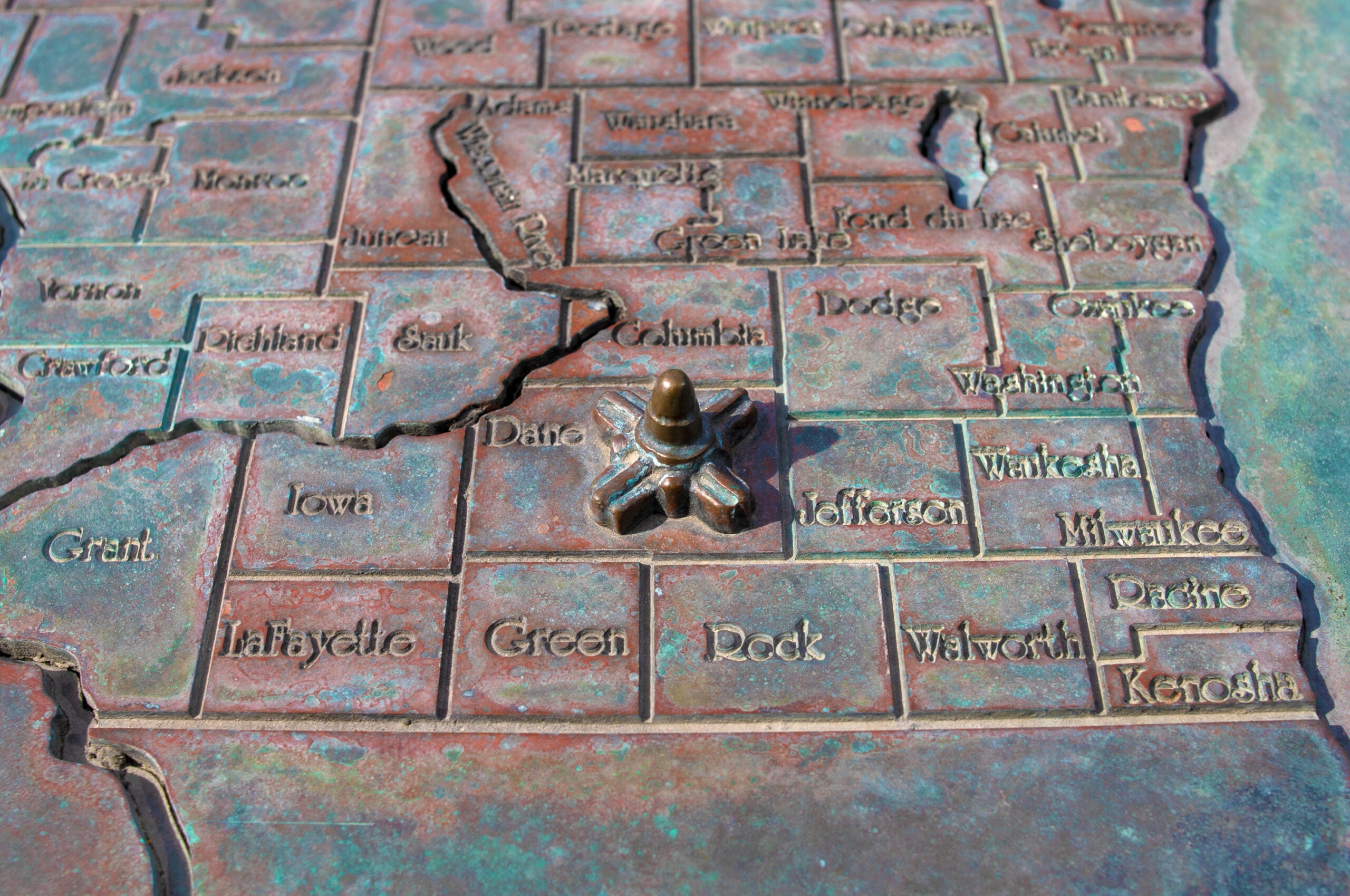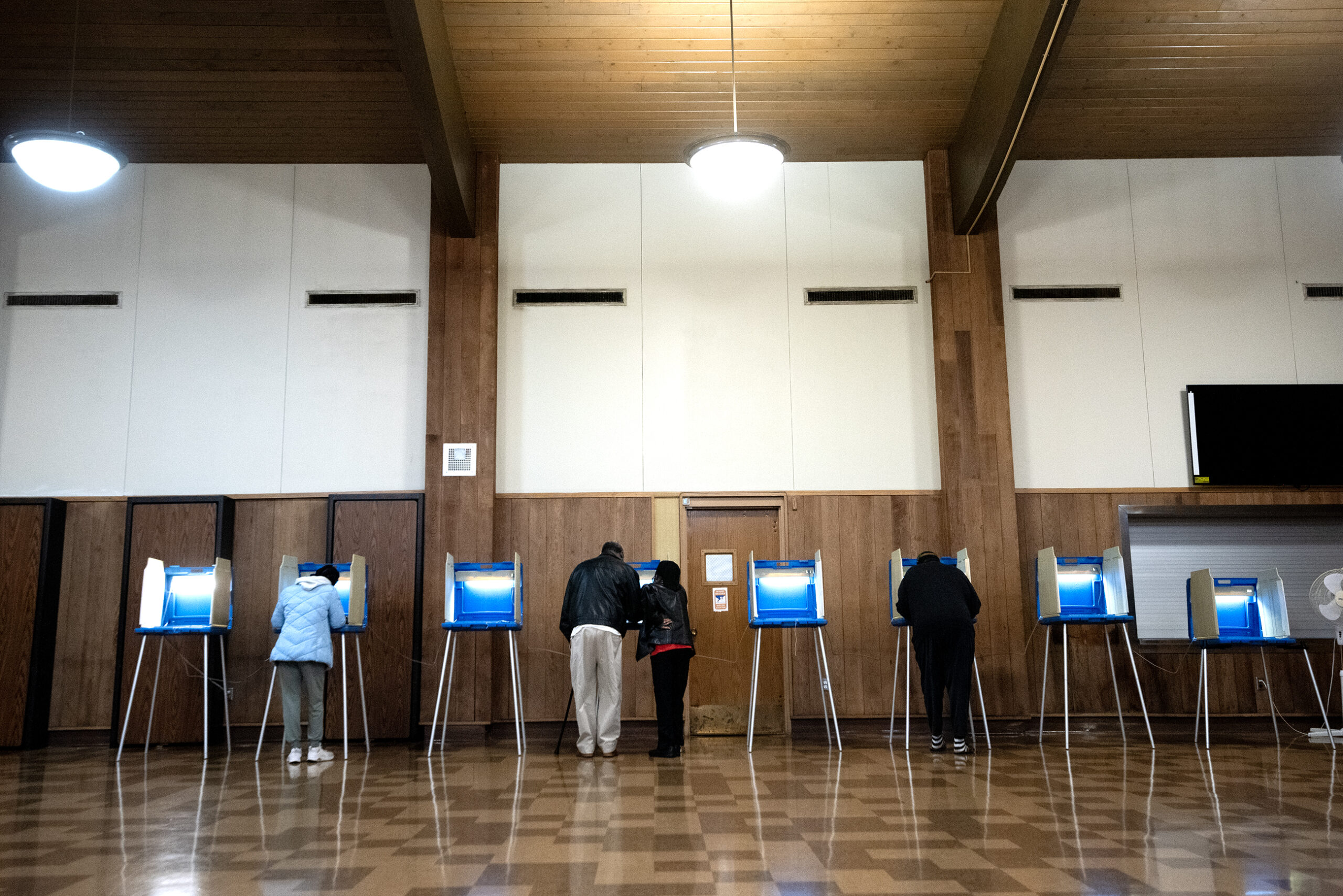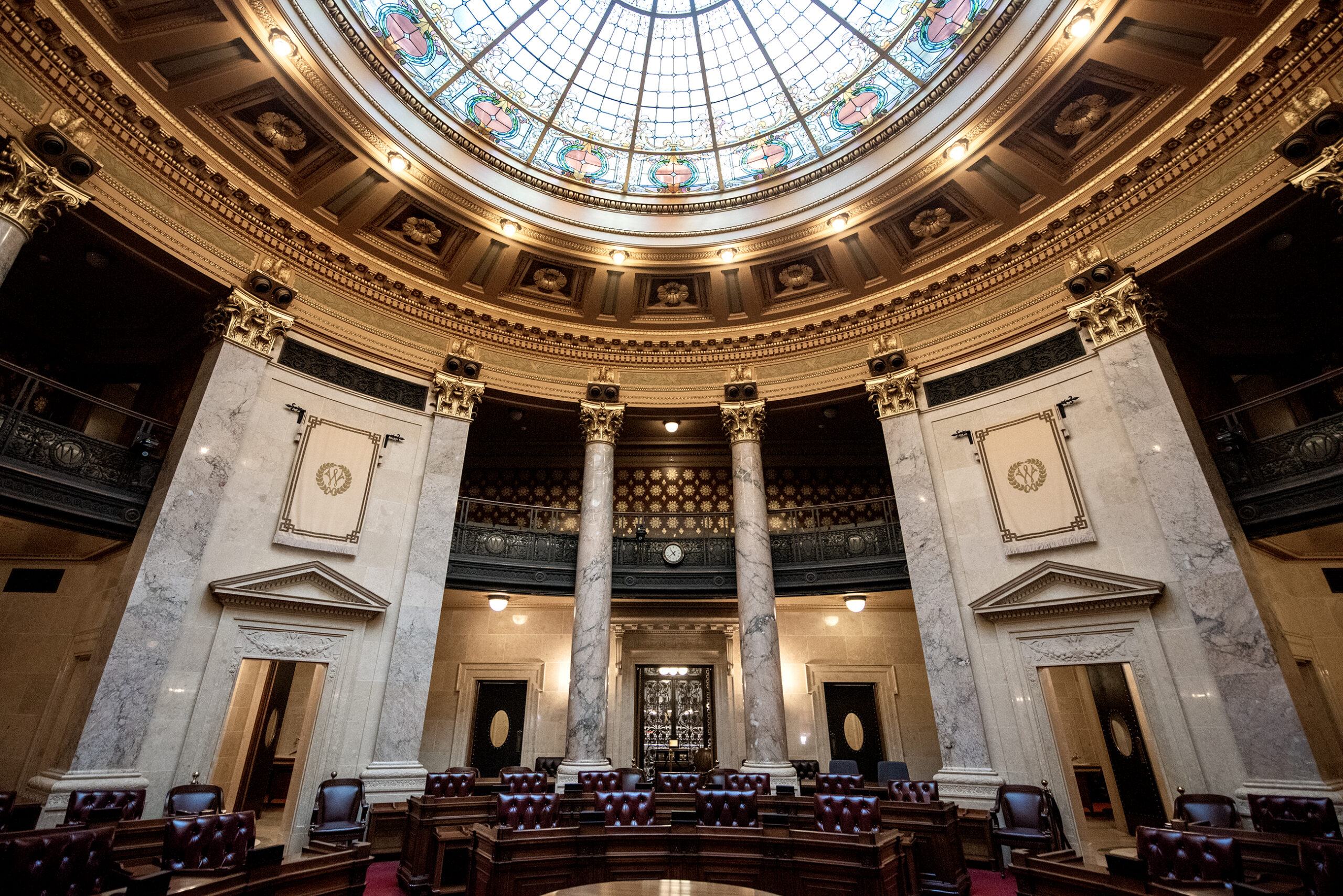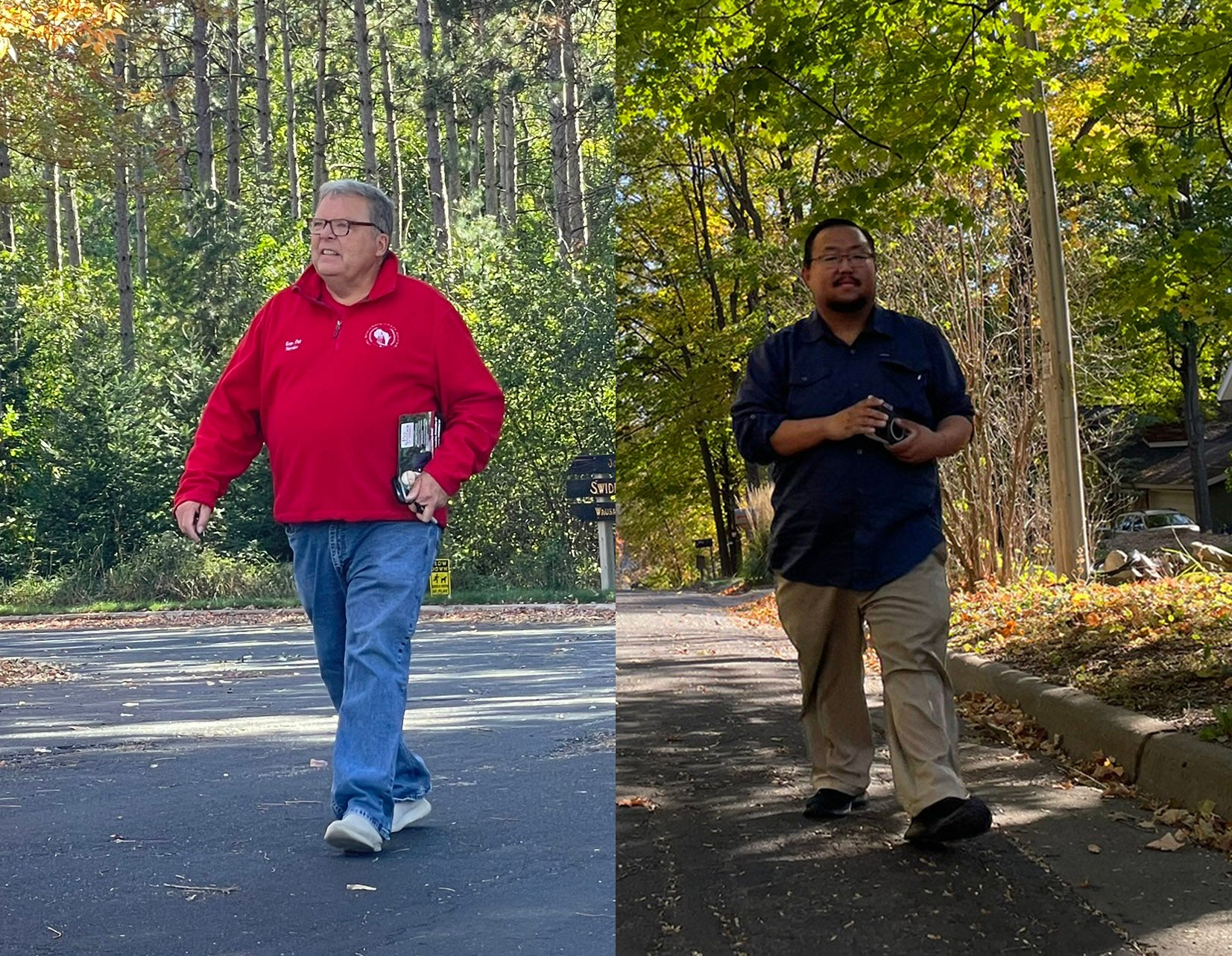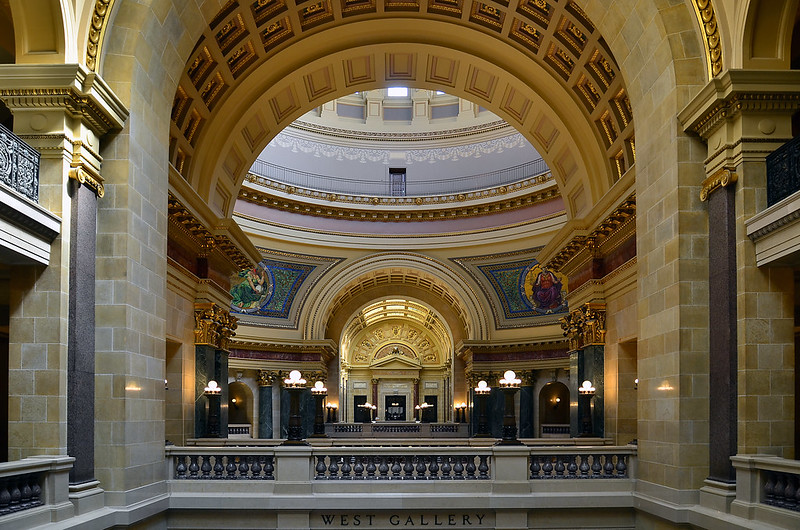There are these terms in politics that you hear all the time — red state, blue state, purple state.
Purple state: It’s what happens when you mix the same amount of red and blue, Republican and Democrat. Wisconsin is just about as purple as they come, because elections here — statewide elections — are about as close as they get.
There’s no shortage of examples. Just last year, nearly 3.3 million votes were cast in Wisconsin’s presidential election. President Joe Biden won by just 20,682 votes, a margin of less than 1 percent.
The 2016 presidential race was just as close, but it went the other way. Former President Donald Trump won Wisconsin that year by 22,748 votes, which was also a margin of less than 1 percent.
This is how it goes in Wisconsin, where sometimes Democrats win and sometimes Republicans. The political pendulum swings back and forth.
And it’s not just races for president. In 2018, Democrat Tony Evers narrowly won the Wisconsin governor’s race, defeating former Republican Gov. Scott Walker. In 2014, 2012 and 2010, it was Walker who came out on top over Democrats.

Former Gov. Scott Walker, left, speaks at a victory party in November 2014 after winning reelection. Gov. Tony Evers, right, being sworn into office in January 2019. Morry Gash/Andy Manis/AP Photo
However, in this purple state where both parties win and power swings back and forth, something doesn’t fit the pattern: The state Legislature.
It’s red.
It’s very red. And it has been for the past decade. The pendulum never swings.
Redistricting — an unseen force in politics — is a big reason why. You can’t tell the story of political power in Wisconsin without telling the story of the maps.
The redistricting plan Republicans drew a decade ago has helped lock in their power. And yet the redistricting process is something many people don’t understand.
‘I don’t know anything about it’
On Aug. 13, just a day after Wisconsin’s 2021 map-drawing cycle officially began with the release of data from the U.S. Census Bureau, WPR asked people at the Wisconsin State Fair what they knew about redistricting.
The answer more times than not was: not much.
“I don’t know anything about it, actually,” said Maddy Koel, of West Bend. “Absolutely nothing.”
“Sounds boring,” said Shelly Speciale, of Delavan. “Sorry.”
Mike Imig, of Green Bay, said he’d heard of the term “gerrymandering,” but he wasn’t quite sure what it meant.
“I don’t. I really don’t,” Imig said. “I feel like I should know that.”
This was really common. People said it’s not that they’re uninterested in redistricting, they just don’t know about it. They never learned about it in school.
But students in David Olson’s class did.
Olson, who taught social studies for a decade at Madison Memorial High School, wanted students to know how much redistricting affects their lives.
“Students need to learn about redistricting because it has definite consequences for who represents them, and what policies we create,” Olson said.
Olson knows it’s a heavy subject, so he walks his students through it step by step.
Step one is an event that happens once every decade that sets the table for redistricting: the census.
‘We count everybody up’
Olson, a self-described political junkie, gets noticeably excited when he talks about the census, a process that’s as old as U.S. democracy itself.

David Olson. Image courtesy of David Olson
“Man, it is an event,” Olson said. “A constitutionally mandated exercise, that we must enumerate our citizens.”
The census counts the country’s population every 10 years, finding out where people live and how populations have changed. It just happened again in 2020.
The government uses census data for a lot of things, but at the top of that list is deciding how many seats each state gets in the U.S. House of Representatives — a process called reapportionment.
There are 435 seats in the U.S. House, which are divvied up based on population. States that grow can get more seats and states that don’t grow can lose seats.
Then, that information is used to draw political maps, to do redistricting.
Puzzle pieces
Wisconsin has eight U.S. House districts, which are like eight puzzle pieces that cover the map of the state. Redistricting decides what those puzzle pieces will look like for the next decade.
Redistricting also slices up Wisconsin into 99 state Assembly districts and 33 state Senate districts. Each of those districts — those puzzle pieces — is represented at the state Capitol by your state representatives and your state senators.
The full puzzle — the way those pieces fit together — is a political map. Every 10 years, the Wisconsin Constitution requires that map be redrawn. The puzzle pieces change because the population changes.
“So think about the community where you live,” Olson said. “Have there been people moving out? Have there been new apartment buildings going up? Did your city get bigger or smaller in your lifetime? Because that’s going to make a difference as to how big your district is.”
Each district has to be roughly equal in population. This concept — one person, one vote — is a fundamental part of redistricting that’s grounded in decisions handed down by the U.S. Supreme Court in the 1960s.
In theory, this is what reapportionment and redistricting are all about. We count people up to make sure everyone has equal representation in their government.
Wisconsin Public Radio, © Copyright 2024, Board of Regents of the University of Wisconsin System and Wisconsin Educational Communications Board.

